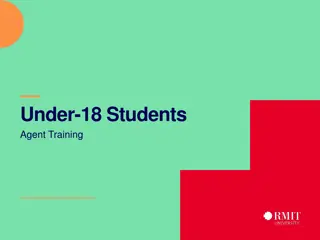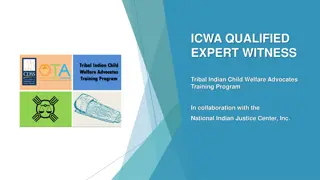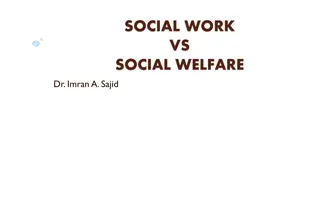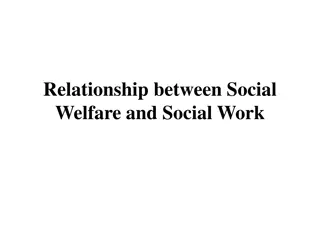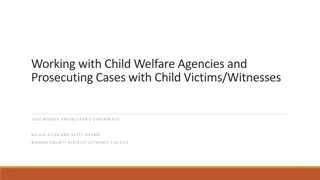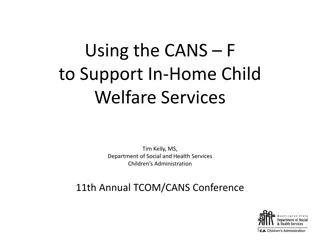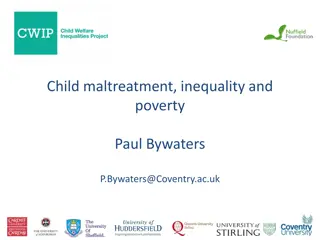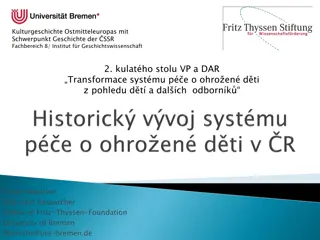Enhancing Decision-Making Skills in Child Welfare Services
Explore a comprehensive training program focusing on critical thinking for decision-making in child welfare services. Learn to analyze, assess, and reconstruct your thinking to improve outcomes for families and children. Equip yourself with tools and processes to increase confidence in decision-making and navigate through difficult choices effectively.
Download Presentation

Please find below an Image/Link to download the presentation.
The content on the website is provided AS IS for your information and personal use only. It may not be sold, licensed, or shared on other websites without obtaining consent from the author. Download presentation by click this link. If you encounter any issues during the download, it is possible that the publisher has removed the file from their server.
E N D
Presentation Transcript
Using Critical Thinking Skills To Impact Decision Making Indiana Department of Child Services Child Welfare Services
General Instructions You will need Notepaper pen/pencil timer (phone or other device) paperclips There will be resource documents you may print/save throughout the training.
Course Competencies By the end of this course, participants will be able to: 1. Express an increased confidence in decision making. 2. Explain the process of Critical Thinking in decision making. 3. Utilize tools and processes to guide decision making. 4. Think critically to increase positive outcomes for families and children.
Difficult Decisions Make a list of difficult decisions you make regularly as a part of your job. Review the list and mark those that you worry about the most. Set the list aside, we will come back to it later.
Defining Critical Thinking The process by which a person improves the quality of their thinking by skillfully analyzing, assessing, and reconstructing it. This entails effective communication and a commitment to overcome our own bias. www.criticalthinking.org
Defining Critical Thinking An important part of critical thinking in the child welfare field is to eliminate our own bias when making decisions. To do this, we must: Collect and evaluate evidence Use facts to draw conclusions Always consider alternate explanations
Critical Thinking Activity Click on the image to review Situation #1. You may use and save the fillable PDF, or print it to complete.
Critical Thinking Activity Click on the image to review Situation #2. You may use and save the fillable PDF, or print it to complete.
Self Reflection Compare or recall the two lists. Do you rely on experience, intuition, and your familiarity for services? Consider how you would like a practitioner to evaluate and determine care you may need, based on evidence, research, and study results. Our clients want the same in services offered to them.
Characteristics of Critical Thinkers Self Evaluation and Examination Be aware of biases Consider alternate explanations NASW DCS Quality Indicators DCS and Agency Policy Field Standards Expand Thinking Skills Improve Decision Making Process Mindfulness
Characteristics of Critical Thinkers Engage in Dialogue Experienced Coworkers Staffing with Supervisor Tell me more! Help me understand Show empathy Promote Dialogue
Disregarding Critical Thinking A lack in critical thinking can result in Cookie Cutter Services for all clients Inappropriate Services Clients become frustrated and defiant Underlying Needs are not determined Behavioral Change cannot be accomplished
Brainstorming Activity 1. Set a timer to TWO MINUTES. 2. Collect a pile of paperclips if possible (or think about paperclips) 3. Start the timer and list all the things you can do with your paperclips. Be creative, there are no rules! 4. Advance to the next slide when your time is up. One way to begin to think critically about a situation is to brainstorm. As you reflect, engage in dialogue, and ask those critical thinking questions we reviewed, you can also begin writing down possible solutions. No idea is a bad idea when brainstorming!
Brainstorming Activity Compare your list to this website, listing 101 uses for a paperclip. http://www.xrysostom.com/paperclip.html Were there things on the list you didn t think of? Other people may have listed completely different ideas, based on their knowledge, experiences, and needs. It is important to use the entire child and family team to brainstorm solutions and ideas. No idea is a bad idea, and someone may have a solution no one else would think of!
Keys to Effective Practice Knowledge of Child Welfare Self Awareness (Personal Bias) Procedural Knowledge (DCS/Agency Policy and Practice Expectations)
Practice Skills as Critical Thinking Tools These are the DCS Practice Skills. Click on each term to learn more about it and how it can be used in critical thinking. Engaging Teaming Assessing Click Here After Review Intervening Planning
Practice Skills as Critical Thinking Tools Engaging Effectively establishing a relationship with children, parents, and team members for the purpose of sustaining the work that is to be accomplished by the child and family team. Engage the team to gather insightful perspectives from each team member. This will allow you to have as much information as possible to make family centered decisions.
Practice Skills as Critical Thinking Tools Assessing Obtaining information about events that brought families into the child welfare system and looking for strengths and needs of the children and family members that, with the help of the child and family team, can be addressed. Assess circumstances and needs without bias.
Practice Skills as Critical Thinking Tools Planning Tailoring the planning process to each child and family, including the design of steps that move children and families to a higher level of functioning. Thoughtfully plan services with the family, implementing ideas the team has brainstormed together. Avoid inappropriate services by planning critically with your team. Develop a plan that is practical and acceptable for the family.
Practice Skills as Critical Thinking Tools Intervening Interceding with actions that decrease risk, provide for safety and stability, promote permanency, and establish well-being. Skills may range from finding housing to changing a parent s pattern of thinking. Intervene after considering multiple solutions and outcomes, and considering alternative answers to what appears to be happening.
Practice Skills as Critical Thinking Tools Teaming Assembling, becoming a member of, or leading a team to bring needed resources to the critical issues of children and families. Gather a group of formal and informal supports for the family in order to collect a variety of knowledge, experience, and tools to most effectively think critically to create solutions. A quality team will focus on family centered ideas and solutions.
Critical Thinking Questions for Practice Skills Click on the image below to review and save or print critical thinking questions to be used for each Practice Skill.
Course Competencies Now that you have completed this course, you will be able to: 1. Express an increased confidence in decision making. a. Through Self Evaluation, knowledge of Field Standards, Mindfulness, and Dialogue
Course Competencies Now that you have completed this course, you will be able to: 2. Explain the process of Critical Thinking in decision making. a. Using Questions Critical Thinkers Ask b. Using the TEAPI Skills
Course Competencies Now that you have completed this course, you will be able to: 3. Utilize tools and processes to guide decision making. a. Questions Critical Thinkers Ask b. Brainstorming c. Keys to Effective Practice d. Practice Skills and Questions
Course Competencies Now that you have completed this course, you will be able to: 4. Think critically to increase positive outcomes for families and children. a. Ask Critical Thinking Questions b. Brainstorm with the team c. Use Practice Skills
Difficult Decisions Put your new skills to work! Recall the list of difficult decisions you created at the beginning of this course. Select one (or more) to work through the critical thinking process. Make sure you remember the characteristics of critical thinkers, utilize the team, brainstorm, and continue to team, engage, assess, plan, and engage!
Bibliography Adapted from the Institute for Family Development, 34004 16th Avenue South, Suite 200, Federal Way, Washington 98003 http://www.criticalthinking.org/pages/our-concept-of-critical-thinking/411 Gibbs, L. and Gambrill, E., Critical Thinking for Social Workers: A Workbook. Thousand Oaks, CA, Pine Forge Press, 1995 www.learningcommons.ubc.ca http://www.xrysostom.com/paperclip.html










